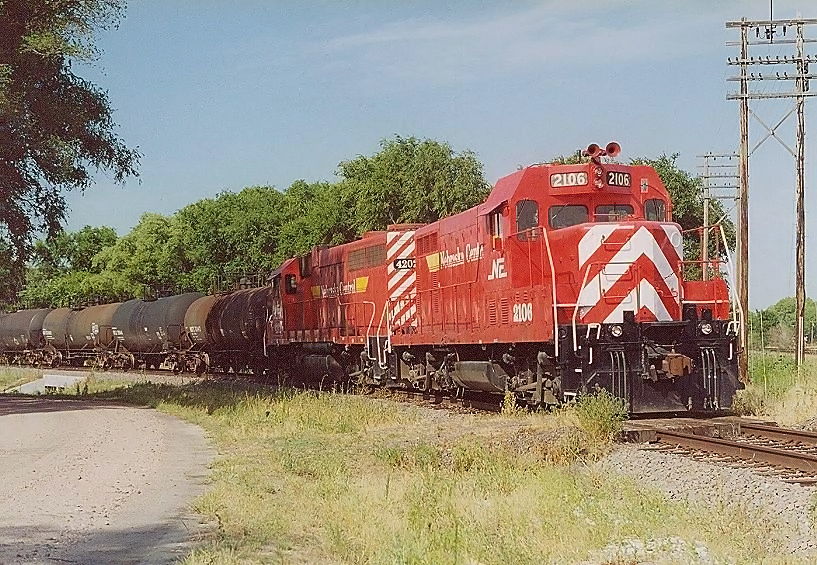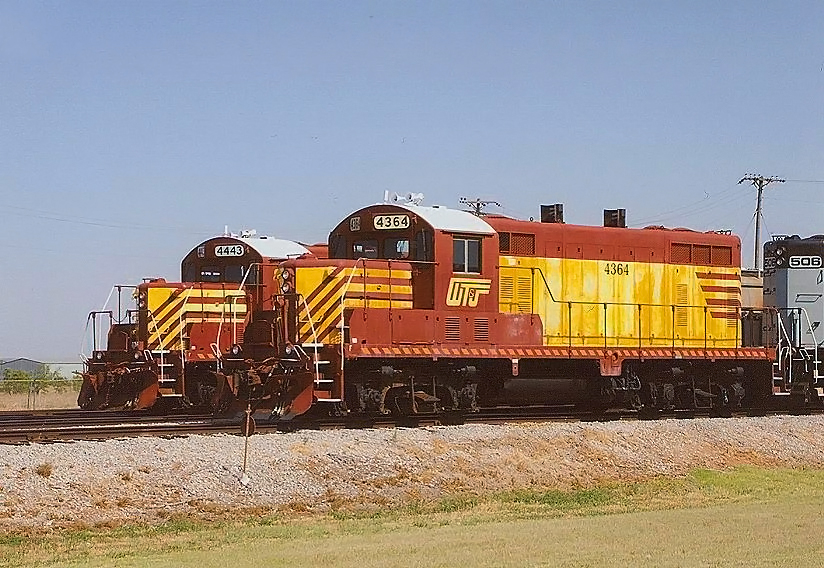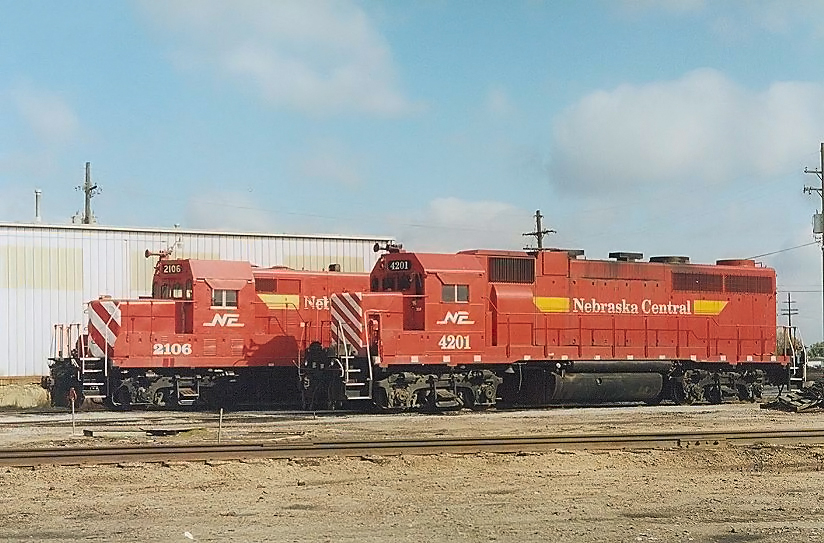Rio Grande Pacific Corporation: Customer Focused Since 1986
Published: August 9, 2024
By: Adam Burns
The Rio Grande Pacific Corporation (RGPC) is a notabl player in the railroad industry, providing extensive rail management, operations, and logistics services in the areas of safety training, railcar switching, track repair and inspection, tamper service, and car repair.
The company also aids in reducing dwell times and demurrage expenses. Founded in 1986, the company has is headquartered in Fort Worth, Texas.
RGPC is particularly noted for its expertise in short line and regional railroads, playing an integral role in local economies by supporting various industries including agricultural products, chemicals, lumber, minerals, and recyclable materials.
RGPC operates several short lines including the Idaho, Northern & Pacific Railroad; New Orleans & Gulf Coast Railway; Nebraska Central Railroad, and Wichita, Tillman & Jackson Railway.
These four systems total approximately 700 route miles across six states serving around 140 freight customers, including several Fortune 500 companies.
 Nebraska Central GP7u #2106 and GP38m #4202 have arrived at the Union Pacific connection in Central City, Nebraska with their train on July 26, 2002. Doug Kroll photo.
Nebraska Central GP7u #2106 and GP38m #4202 have arrived at the Union Pacific connection in Central City, Nebraska with their train on July 26, 2002. Doug Kroll photo.Early Years
The Rio Grande Pacific Corporation (RGPC) is another of the numerous short line holding companies which sprang up following the industry's deregulation in 1980.
It was founded by Rick Bertel who, like many other entrepreneurs that decade, recognized an opportunity to build a successful business behind trackage deemed redundant and unwanted by many of the Class I's at the time.
Since it began RGPC has grown into a network covering 700 miles among four different railroads serving six states.
 Wichita, Tillman & Jackson GP7u's #4364 and 4443 (both former Chicago & North Western units) are seen here at Altus, Oklahoma on June 17, 2011. Doug Kroll photo.
Wichita, Tillman & Jackson GP7u's #4364 and 4443 (both former Chicago & North Western units) are seen here at Altus, Oklahoma on June 17, 2011. Doug Kroll photo.It seems 1986 was the year of the startup short line holding company with Pioneer Railcorp, RailAmerica (acquired by Genesee & Wyoming in 2012), OmniTRAX, and Rio Grande Pacific Corporation all being launched that year. In addition, the previous year Anacostia & Pacific and Gulf & Ohio Railways had also launched.
Bertel noted an interview with Transportation & Logistics International, "One of our first and biggest clients was the state of Oklahoma," he recalls:
"After the deregulation, they woke up one day and found they owned about 1,500 miles of track, so we acquired some of those properties. We bought our first property in 1990; it was in poor condition, but we had a lot of expertise in infrastructure, so we made it work. It was successful, so we went on to buy other properties."
Properties
That first property was known as the Wichita, Tillman & Jackson Railway, which officially began service under RGPC on January 14, 1991.
The WT&J's primary route operates between Wichita Falls and Altus (roughly 78 miles) ands was originally constructed by the Wichita Falls & Northwestern Railway between 1906 and 1909, which later came under the Missouri-Kansas-Texas Railroad's control in 1912.
During its heyday this long branch extended from the Katy's main line at Denison, Texas all of the way to Oklahoma's western panhandle at the small community of Keyes connecting Wichita Falls, Texas and Altus, Oklahoma along the way.
WT&J's other segment is a former Rock Island branch constructed around 1900 that currently connects Waurika with Walters, Oklahoma (about 24 miles in length).
All of this property was acquired by Oklahoma to preserve rail service, largely for agriculture customers, and the state continues to own the trackage today. Aside from agriculture the short line also handles fertilizer, gypsum board, sand, soda ash and chemicals.
Following this startup Rio Grande Pacific launched two more short lines in 1993; the Nebraska Central Railroad (NCRC) on June 27th and Idaho, Northern & Pacific (IN&P) on November 15th.
The NCRC is a very large system consisting of 340 miles spread out across central Nebraska; most of the property is former Union Pacific branches connecting Brainard, Palmer, Columbus, Norfolk, Albion, and Spalding while the segment between Grand Island and Ord is former Burlington trackage.
The short line is very similar to the WT&J in that its traffic is also largely agriculture-based handling mostly grain along with fertilizer and scrap steel.
Due to its large size Rio Grande Pacific has broken down the NCRC into five different subdivisions. These include:
- Albion Subdivision: A 34 mile line linking Oconee and Albion via Genoa.
- Cedar Rapids Subdivision: Covering 45 miles and connects Genoa with Spalding via Fullerton)
- Norfolk Subdivision: Ooperates 53 miles from Columbus to Norfolk.
- Ord Subdivision: A long 65-mile segment running from Grand Island to Ord.
- Palmer Subdivision: A 20-mile stub connecting Central City to Palmer.
- Stromsburg Subdivision: Runs 63 miles from Central City to Brainard.
Moving further west is the IN&P, a short line that also operates over entirely former Union Pacific property in southern Idaho and northeastern Oregon.
The lines' histories trace back to two different railroads; the Idaho segment was constructed by the Payette Valley Railroad between 1906 and 1910 and acquired by the Oregon Short Line in August of 1914 while the Oregon section was built by the Oregon Railway & Navigation Company during the late 19th century.
It, too, came under the direction of OSL, a Union Pacific subsidiary, and both routes would later comprise parts of UP's Idaho and Oregon Divisions. In total the IN&P operates more than 100 miles of trackage in this area with a traffic base consisting of agricultural products, forest products, and chemicals.
Between 1998 and 2016 the IN&P hosted excursion trains for the public in Idaho known as the "Thunder Mountain Line." The tourist railroad traveled roughly sixty miles north from Montour, following the Payette River to Cascade next to beautiful Lake Cascade.
There were three different trips offered including the Horseshoe Bend Route (Horseshoe Bend to Banks), Montour Route (Montour to Horseshoe Bend), and the Cabarton Route (Smiths Ferry to Cascade). Unfortunately, sagging patronage resulted in the service being suspended in 2016.
 Nebraska Central power (GP38m #4201 and GP7u #2106) lined up at the terminal in Grand Island, Nebraska on October 4, 2002. Doug Kroll photo.
Nebraska Central power (GP38m #4201 and GP7u #2106) lined up at the terminal in Grand Island, Nebraska on October 4, 2002. Doug Kroll photo.Rio Grande Pacific's newest subsidiary is the New Orleans & Gulf Coast Railway, which began operations on April 25, 1999. The trackage is based solely in the New Orleans/southern Louisiana region and covers about 37 miles in all.
The property was built as the New Orleans, Fort Jackson & Grand Isle Railroad in 1891 and then became the New Orleans, Southern & Grand Isle Railway before its acquisition by Missouri Pacific around World War I.
After MP's purchase by Union Pacific in 1982 the lines were sold to RailTex, a former short line holding company, in 1991 before being acquired by Rio Grande Pacific in 1999. Today, the NO&GC handles primarily petroleum products, oils, chemicals, food products, grains and steel products.
Recent Articles
-
New York Christmas Train Rides In Corinth!
Dec 17, 25 01:00 PM
Today, the Saratoga, Corinth & Hudson Railway combines historic equipment, hands-on craftsmanship, and immersive family experiences—including its increasingly popular holiday rides, the Candy Cane Exp… -
Pennsylvania Christmas Train Rides In Hollidaysburg!
Dec 17, 25 12:39 PM
Today, the Everett Railroad offers scenic excursions, hands-on steam experiences, and one of the state’s most popular Christmas trains: the Santa Express. -
Wisconsin - Murder Mystery - Dinner Train Rides
Dec 17, 25 12:33 PM
Whether you're a fan of mystery novels or simply relish a night of theatrical entertainment, Wisconsin's murder mystery dinner trains promise an unforgettable adventure.



